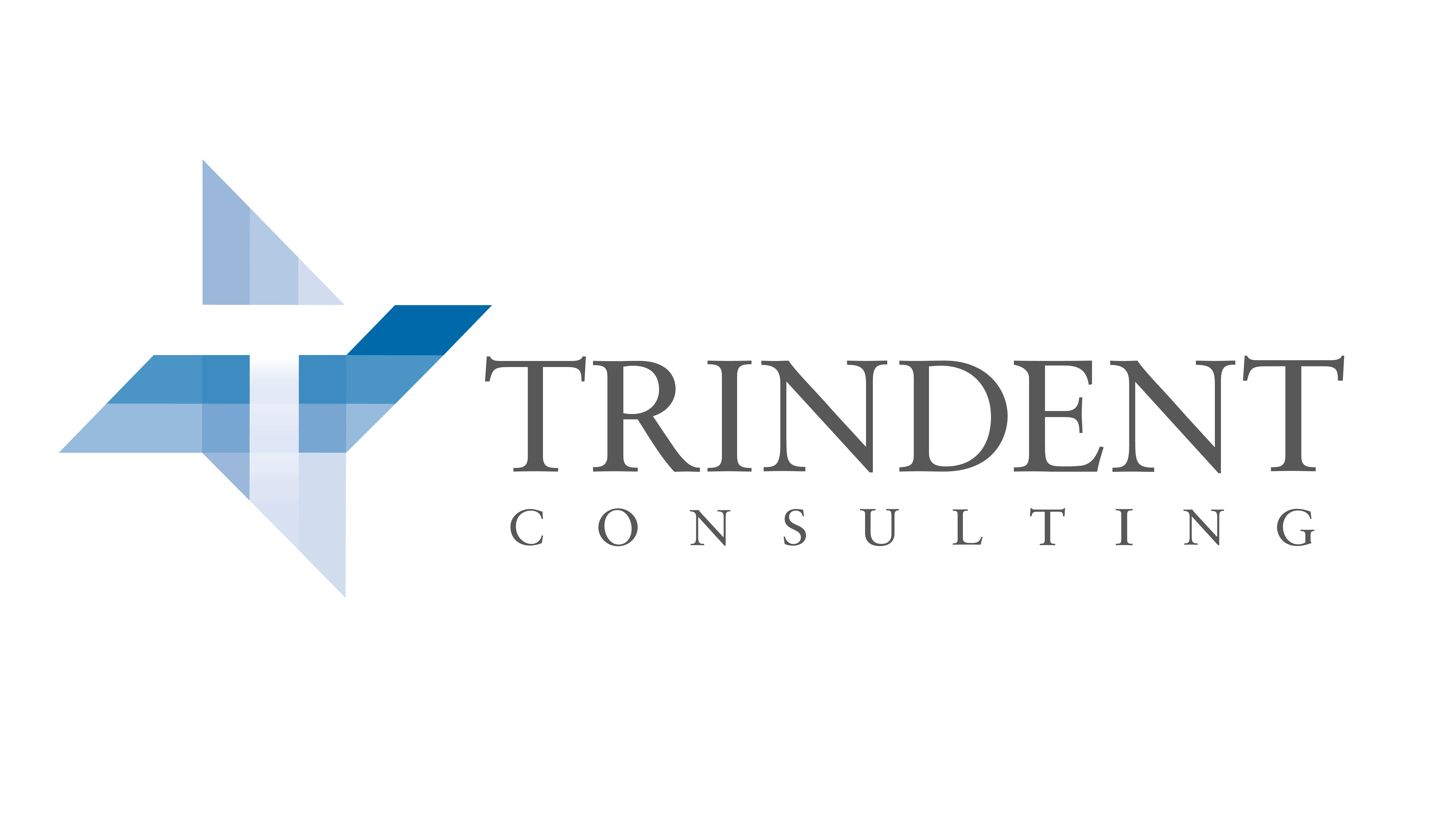Good Customer Service vs Average Handling Time

In Trindent’s financial services call center
productivity engagements, we often work with clients who believe that call
centres can’t pursue efficiency without negatively impacting the quality of customer
service.
However, good customer service and efficiency don’t
have to be mutually exclusive. If
addressed correctly, a call center can have both.
Understanding Your Call Center Metrics
Even with smart IVR routing, the volume and complexity
of the calls coming into a bank or insurance call centre are uncontrollable
variables. A high volume of complicated calls
can negatively affect call center service levels, and customers service
representatives are constantly being pushed to stay within Average Handling
Time KPI targets to avoid that. However,
without understanding the underlying inefficiencies that exacerbate the length
of each transaction, this negatively impacts the level of customer service that
call center agents are able to provide without addressing the real issue.
To understand where inefficiencies in a call center
transaction can be found, the first step is to break Average Handling Time (AHT)
into its components.
AHT is measured when Average Talk Time (ATT), Average After-Call Work Time (AWT), and Average Time on Hold (ATH) are added together. All three AHT components contain the value-add activity of addressing customer issues, but often also include non-value activities that could be streamlined or avoided altogether.
AHT = ATT + AWT + ATH
Knowing Where to Look
In our financial industry call centre engagements,
Trindent has consistently found a number of common inefficiencies that affect
AHT metrics:
- Skills gaps and lack of training in
customer service representatives that lead to unnecessary escalations, excessive
call transfers and unneeded rework, which has an affect on all three components
of AHT; - Talk time beyond addressing customer needs
in an attempt to increase customer satisfaction, which affects ATT; - Lack of standardized processes or policies
for issue resolution, which affects AWT and ATH; - Lack of documentation standards, which affects
AWT; and - Lack of individual CSR performance
visibility to management, which affects all three components of AHT.
Getting Results
Once Trindent addressed these inefficiencies and
implemented process improvements, CSRs found themselves able to resolve the
same volume and complexity of customer requests in a significantly more efficient
manner. This allowed them to stay within
AHT targets without affecting customer service.
With the right approach, call centers don’t have to
choose between meeting Average Handling Time targets and good customer service.
Click
here
to learn more about how Trindent can Make It Happen ™ for your organization.
The Power Of Feedback

A common theme Trindent sees in our financial services engagements is time lost to excessive rework at the end of an application process cycle. In an insurance organization, multiple hand-offs between departments occur as a regular part of the cycle, from the intake of new applications to the final issuing of a policy. However, one crucial part of the cycle that tends to get overlooked is quality control.
What Trindent has found is that when there are no proper quality control steps built into the process, verification and correction ends up becoming the responsibility of the last department to touch the application before it heads out the door, creating a bottleneck that leads to longer processing time and decreased turnaround. Gatekeepers at the end of the process become de facto checkers of quality and fixers of errors – a responsibility that’s not factored into their output targets and one that goes well beyond their mandate. Often, department managers are not aware this a problem because it’s become status quo and the lost time it creates was long ago factored into the service level.
Quality Control Alone Isn’t Enough
The obvious solution to improve this inefficiency
would be to establish quality control checks earlier on in the process; for
example, the implementation of checklists or verification steps to ensure that
work is complete and accurate before an application moves to a subsequent
department. However, implementing quality checks isn’t a
complete solution; it’s a only first step that should lead to addressing the
underlying causes of the error, and this is where the power of feedback comes
in.
When there is no system in place to give
feedback to the person or team making the errors, then the errors will continue,
as will the time lost to verification and rework bottlenecks. Finding the errors early in the process is
good, but there needs to be a way to prevent the errors from persisting. Feedback is the key to this.
Feedback plays an important part in Active Management and allows team leaders to connect with their staff on performance. While feedback can – and should – be used as a tool for positive reinforcement, in cases of errors and rework it is a communication tool to be used to ensure mistakes don’t continue.
When a quality control check uncovers an
error, an active manager should use feedback to:
- Let their employee or team know
the error has been made. If someone is
unaware they’ve made an error, they won’t know to avoid repeating it. - Work with the employee or team
to understand why the error occurred.
Was it a one-time mistake? Is
there a flaw in the process that needs to be addressed? Is there coaching or training that should
take place? - Implement changes to avoid
repetition of the error. - Follow up to make sure the
underlying cause of the error has been eliminated. At this point, feedback can again be used as
a positive reinforcement tool to motivate the employee or team to adopt the
improved, error-free behaviour.
If quality control is 80% in the 80/20
rule, then feedback is the remaining 20%.
This last piece of the puzzle is designed to facilitate continuous
improvement in efforts to diminish errors and decrease time lost to rework.
In past engagements, Trindent clients have seen a reduction in error rates, increase in quality, and better overall turnaround time and customer satisfaction with active management training for their team leaders.
Click here to find out more about how Trindent can help your organization harness the power of feedback.
Fast In Fast Out: Improving Patient Discharge and Increasing Throughput

Hospital emergency departments are fast-paced environments where physicians and nurses race against time to deliver care to patients. To be effective, hospitals rely on metrics to assess the performance of their emergency departments. One such metric is discharge time which is the time it takes for a patient to be seen and discharged.
The
discharge process is multifaceted and can involve various medical personnel
such as physicians, nurses, radiologists, cleaners, administrative staff, etc.
An emergency department with a short discharge time is indicative of a high
degree of efficiency and coordination.
The process of efficient patient discharge can be explained by the example of a relay race. To win a race, the baton must be seamlessly passed from runner to runner or in this case, the healthcare providers. For winning this race, communication is key. Similarly, one of the best ways to turbocharge the patient discharge process is to improve communication and awareness amongst the various personnel involved, i.e., passing the baton. This can be done in three ways:
- Sharing discharge
related information - Early Identification of
Potential Discharges - Prioritization of
patients that are being discharged
Sharing
Discharge Related Information
In an emergency department where medical staff members are highly specialized, silos could form amongst the various functional groups in the absence of information sharing. This is especially problematic because the lack of visibility of how work in one area flows into other areas can grind the discharge process to a halt. One of the ways to alleviate this is to circulate the discharge plan. Doing so will allow staff members to anticipate discharges and prepare ahead of time. For example, if a physician ordered a test prior to discharging a patient, case managers and social workers can begin the process of making discharge arrangements while the tests are being conducted. This way, the two processes can occur concurrently. If the discharge plan is not shared, the case managers and social workers will likely find out about the discharge once the patient’s tests are completed which adds extra time to the process.
Early
Identification of Potential Discharges
Patients should not have to wait until daily rounds to be identified for discharge. If a patient is fit for discharge at 8 am and daily rounds do not happen until 10 am, then we just lost 2 hours in the discharge process. By discharging patients earlier in the day, rooms can be vacated which increases capacity to admit more patients and improves throughput.
Prioritizing
Patients That Are Being Discharged
Patients that are being discharged should be prioritized throughout the emergency department. When the physician orders additional tests for a patient, are the lab technicians aware that the orders are for a patient waiting to be discharged? Improving communication, giving increased visibility to the technicians, and streamlining the process will allow the technicians to prioritize the orders for discharge patients by moving them up the work queue.
An efficient patient discharge process is indicative of a coordinated emergency department. By combining active management with the three ways of improving patient discharge, emergency departments can increase throughput without sacrificing the quality of care which would increase patient satisfaction and reduce the number of patients that leave without treatment.
The author of this blog, George Xu is a Senior Consultant and Trindent Consulting.
Driving Operating Room Optimization From Outside the O.R.

Optimizing operating rooms is a difficult undertaking
because there are so many variables involved, including doctors and staff with
myriad responsibilities.
It’s hard to know where to start. How do you prioritize tasks and which
responsibilities take precedence? Does the process have an actively managed and
well supported set of steps? Do all team
members fully understand their role and how their role supports and interacts
with one another?
Many organizations begin their optimization
journey inside the operating theater and de-prioritize opportunities outside
the operating room to increase efficiency.
Where to Start the Optimization Journey?
Begin at the beginning and go on till you come to the end; then stop”.
Lewis Carroll, Alice in Wonderland
The greatest opportunity for improvement in
Turnaround Time for Operating Rooms is at the beginning of the process. Frequently, up to 50% of unaccounted for
patient experience time can be attributed to Pre-Operation processes. Many small improvements can be made to ensure
success and timeliness inside the operating room, but the greatest leap forward
is made between Patient Arrival and Wheels In. Often, each separate person in
that process becomes so focused on the completion of the many tasks required of
them they lose sight of how the team is providing overall patient experience
and the time being used to prep for the surgery.
Building a patient experience-focused
process increases perceived service levels, but more importantly, it also
increases efficiency. Frequently patients experience as many as four
pre-operation interviews from the pre-op nursing staff, CRNA, anesthesiology,
and the surgeon. Often the questions are
repetitive and create distress for patients, especially when each of the
interviews is spaced out and can give the impression the unit is not
communicating. Certain interview questions must be asked multiple times but
coordinating the process to ensure patient confidence is essential. And that the
coordination of the interview process decreases Patient Arrival to Wheels In
even further.
Essential staff need to have a well-organized
and robust process to be efficient. Metrics for each role and the overall process
must be created and reported on to all staff daily. A management operating
system for pre-op processes is essential to delivering optimized results by
illuminating opportunity in each role and task. Monitoring, reporting on, and
actively managing key metrics of pre-operation processes reduce Patient Arrival
to Wheels In Time.
Conclusion
Operating Rooms are complex and complicated
places to optimize based on the roles and responsibilities necessary to have
successful outcomes. Developing well-coordinated, efficient, and robust
pre-operation processes then Actively Managing those process through key
indicators as part of a Management Operating System delivers cost-efficient OR
optimization and increased patient satisfaction.
To learn more about how Trindent Consulting can assist your healthcare organization to improve the processes inside or outside of your Operating Rooms, click here.
Excessive Processing is Costing You
A common challenge that Trindent tackles in
financial services engagements is rework
caused by excessive processing, an inefficiency that results from an attempt to
artificially create quality control.
Quality control is a vital part of any
service or product, and as such, should have its own established process,
system and behavior component. Relying
on an excessive amount of processing from multiple sources instead of putting
in place solid methodology to ensure quality is not a tenable approach. If not corrected, this rework translates into
poor service levels, long turnaround times, and excessive backlog – all of
which affect the customer’s service experience.
What We Saw Happening
Let’s use the example of a new insurance policy
application working its way through the pipeline. In previous engagements, when we followed the
intake of a new policy application submission from start to finish, we saw that
it had to make its ways through several departments. But what was most concerning is that, with
each handoff, more rework was performed.
Each department had to complete a certain set
of activities around each application and required several different pieces of information
from the application to perform those activities. It was here that we we found two areas of
opportunity to eliminate rework from excessive processing. We found an absence of a process to transfer
knowledge from one department to the next, so when a file was passed along, the
receiving department had to recheck the entire application. And even when information was transferred, we
found the receiving department still rechecked the entire application out of concern
that blame would fall on them if there were any inaccuracies.
What We Did
Through observations and process mapping, we
identified these two inefficiencies and the opportunity to improve them. The underlying cause of both types of
excessive processing was an attempt to create quality control. In both cases, there was unclear
communication, an ill-defined breakdown of responsibilities, and a lack of
active management – all of which led to a fear-based mentality and a duplication
of work.
To remedy this situation, we looked for a
solution that would prevent any further increase in processing time but would
reduce the rechecking. With the help of
subject matter experts from the client side, we mapped out current state to
bring overlaps in process into sharp relief.
From here, we were able to design a new process where the first
department to have their hands on an application implemented the use of a
checklist that would reduce the need for the second department to read the
entire application. Simultaneously, if
any inaccuracies were detected by the second department, they would be logged
and checked anonymously so that no one feared repercussions.
This solution to excessive processing not
only changed the process but its associated behaviour as well, taking both
rework and fear of repercussion out of equation, while creating a more robust
path to quality control.
Conclusion
The expression “time is money” is appropriate
to inefficiencies we’ve observed in these engagements. Excess processing is a common pitfall that
many financial service sector companies still encounter. A conscious effort to reduce or eliminate these
types of inefficiencies results in better service levels between departments, ultimately
decreasing the total end-to-end wait times that frustrate customers.
Implementing efficient processes, robust systems
and the right set of behavior can allow any financial services organization to
reduce waste and boost service levels. Click here to find
out how Trindent and our proven methodology can your organization make
sustainable changes to process, systems and behaviors.
PAVING THE WAY TO SUCCESSFUL CHANGE
Any improvement strategy, no matter how masterfully crafted, is only as strong as its implementation. The good news is that with a good and systematic approach to implementation, a successful outcome can undoubtedly be achieved.
There are many components to implementation success, from an organization’s culture and values to the efficiency of its nominal processes. More often than not however, perfectly optimal conditions don’t exist, and a successful implementation requires that some amount of organizational change be made first.
This is where the process can run into trouble. Even though making organizational changes can mean the difference between a good and a great improvement implementation, the obstacles of change have to be overcome first.
Why Change Can Be Hard
The importance of adapting to change is often overlooked as being important to organizational DNA. In a company’s nascent stage, everything is new, so adapting to change it’s not a high priority. As an organization grows, it tends to start optimizing by following established, proven ways, staying in a proverbial “groove”. And at a certain point, it hits a threshold where change becomes intrinsically difficult.
Change is never easy. Most people operate with cognitive biases that prevent them from readily accepting a disturbance to their status quo. As difficult as change can be an individual level, changing an organization made up of hundreds or thousands of people becomes that exponentially more complex.
Change the Playbook
There are several straightforward but important steps that an organization should take to change manageable and improvement implementation successful:
- Communicate. The outcomes and the expected benefits of the implementation should be communicated clearly to every level of the organization, to alleviate fear of the unknown and create excitement about the wins.
- Generate buy-in. While motivation is an important component of any performance, it’s a necessary requirement in undertaking change. If your team agrees with your plan, they won’t object to change.
- Include. The more key members of staff are included in the change design and implementation process, the stronger the buy-in and cooperation of their teams will be.
- Commit. Company leadership must show commitment to the change and resolve during its implementation to make its adoption successful.
- Support. Milestones need to be recognized and exemplary performance showcased. Key performance indicators should be institutionalized and made norm to ensure sustainability.
The need for change often doesn’t become apparent until adversity hits. And while hard times lower resistance to change, in business waiting until conditions sufficiently deteriorate can have serious consequence. Therefore, it’s important for organizations to start change at an early and less critical stage, even when that can be challenging and uncomfortable. Click here to read more about Trindent’s
Your Stagnant Processes May Be Costing You
If it ain’t broke,
don’t fix it” is a mindset many organizations adopt. But when it comes to operational processes,
assuming this approach can become a costly mistake.
Over time, processes need
to naturally evolve to attain and maintain a functioning normal state; this is standard
and necessary in an organization’s process improvement cycle. Importantly, the word “cycle” implies that the
very nature of process improvement is neither linear nor one-time. Processes need to frequently be challenged, reevaluated,
adjusted, and fine-tuned to ensure they are up to date and optimally executed.
Allowing processes to function
“as they are” without continuously looking to improve them is equivalent to holding
on to cash instead of investing it - you are losing on the time value of your asset,
since a dollar today is worth more than it will be tomorrow. Likewise, a regular investment of time and
money in process improvement is critical, as processes go through exponential
decay if they are left neglected.
What Often Happens
Initial process design is based on reasoning, assumptions and constraints that are relevant at the time they are considered, but these variables naturally change and evolve. As the business landscape is affected by countless shifts in things like technology, policies, and consumer demands, the way organizations operate must adapt and improve in tandem.
Without these
improvements, organizations run the risk of having their operational processes increasing
become outdated, unwieldy, or superfluous, wasting both time and money. And because the decline of process
effectiveness is exponential, the longer the necessary improvements are ignored,
the greater the threat of losses to the business becomes.
Losing Knowledge
One common consequence of allowing processes to stagnate, and one that Trindent often sees in our clients, is Knowledge loss, or “a failure to retain organizational knowledge”.
When process owners
move on to different roles, they take their wealth of institutional knowledge
with them. While it’s common for employees
to change jobs, an organization that doesn’t focus on process improvements will
feel this loss more keenly, as cross-training and knowledge transfer easily falls
victim to process stagnation. Often, a
vicious cycle is created where an already stagnant process will be more deeply
affected by knowledge loss because the agility to deal with that loss was never
implemented to begin with.
Insert Consultants
Here
This is where Trindent
comes in.
There are numerous
benefits to having external resources assist a continuous improvement
process, especially in organizations where
knowledge loss has occurred.
- It frees up the capacity of an organization’s various process owners to focus on their own roles, especially if they are in production or training.
- It allows processes to be analyzed holistically. We look at the big picture and can observe process flows both within and between departments from inception to end, something that a process owner assigned to a specific department will not be able to do.
- It allows each process to be analyzed objectively by someone who is not attached to or invested in a given process other than to ensure it’s useful, necessary, and effective.
- We collaborate with leaders of the organization to train and empower their staff to conduct process change, driving accountability and paving the way to develop a new generation of process owner
- We create proper documentation of current and future state processes so that improvements can continue after our mandate is complete
Conclusion
The need for continuous improvement is necessary in any organization in order to remain lean and effective. With Trindent’s proven methodology, our consultants can become critical partners in ensuring your organization sees measurable and sustainable results so that it can remain competitive and operationally strong in today’s rapidly changing market.
Why Hire A Consultant
Organizations across all industries and in all types of business circumstances engage consultants when they need help in problem-solving. Anyone can face business challenges, and consultants are frequently brought in to deal with things like processes that perform poorly, systems that fail to provide critical information, management bench strength that needs support, or in-house experience that needs to be augmented.
Often, consultants are only brought in after business challenges have reached a critical point and there is a real risk to the operation. However, hiring a consulting firm much earlier in the process, before problems reach a precarious stage, can have immeasurable benefits.
How
Consultants Can Assist
The value of consulting services goes well beyond being the last resort to trouble-shoot something that’s become unworkable. When consultants are brought in as part of regular business practice, they can assist clients to avoid costly business disruptions altogether.
Engaging consultants into the business
means that an organization has someone who can:
- Provide expertise – to bring subject matter knowledge and skills in specific industry best practices, methodologies, and approaches, especially to companies who are short on resources that are available, or are able, to solve a particular problem.
- Augment staff – to add required capacity and skillset on a temporary basis. Clients may need to quickly ramp up resources for a critical project or deliverable, without sufficient time to recruit and effectively train staff.
- Provide independent and impartial points of view – to help management review and make important decisions before they are implemented. Management can often use a sounding board to get feedback on a particular matter, or a fresh perspective to help them chart a better approach.
- Educate staff – to transfer knowledge and competence. Clients can turn to consultants to acquire special technical knowledge and methodologies, such as ones that can be used to identify and implement solutions, or effectively manage projects, people, and change.
Making
the Right Choice
Weighing costs against benefits should be an important factor in the decision to hire consultants. For example, if several areas of the business require improvements, which area would see the greatest return on a consulting engagement. Or, how much would it cost to bring in a consultant at an early stage, before a problem takes root, versus how much productivity would be lost by waiting. Companies should also choose which consulting firm to hire based on their ability to understand specific industry needs, in order to ensure that benefits will be sustainable. At Trindent Consulting, we focus on what we do best - solving the unique problems facing the Energy, Healthcare, and Financial Services industries, and helping companies achieve top performance. Our unique approach yields between 500 – 1500% ROI within the first year, making it a simple decision when weighing costs against benefits.
Using Cost-Benefit Analysis to Avoid Change Fatigue
By Christopher Lee
The pursuit of perfection, the 5th Lean principle, represents a continuous improvement mindset, where the pursuit of perfection is an ongoing process that continuously evolves. However, if not used properly, this concept can be taken to an extreme and cause change fatigue in an organization.
Organizational change fatigue is defined as “a general sense of apathy or passive resignation towards organizational changes by individuals or teams.” It can be caused by several factors, but usually happens when change efforts are unfocused, uninspired, and/or unsuccessful.
As business landscapes continuously change and the competition continues to be fierce, organizations become agitated and feel like they are missing out if they are not also continuously innovating. While innovation is an important long-term goal, “as humans, we inherently need stability, order, and predictability. When change is always occurring, individuals begin to become overwhelmed, their ability to adapt becomes depleted, and the loss of control and uncertainty skyrocket.”.
Therefore, it’s critical to be mindful of the pace of change in order to allow staff to catch up and keep up. Employees need time to understand and accept new concepts before an organization tries to improve or change those concepts again. Change for the sake of change can become overwhelming and leave your employees apathetic at best and resistant at worst.
What Can We Do?
Change is important, but it’s even more important to prioritize which initiatives have higher priority and are time-sensitive. Staff and leaders have limited capacity and overextending their efforts can be detrimental to their production efficiency and morale.
In order to compare the investment efforts of each initiative and then to prioritize them properly, Trindent recommends the use of a familiar but powerful tool – a cost-benefit analysis. This is a systematic approach to estimate and weigh the dollar value of benefits against the cost, financial and otherwise, that may be incurred in implementing those benefits.
Once the analysis has been performed on each
proposed initiative, they can be assessed and prioritized in orders of urgency,
need, and return on investment.
Conclusion
Organizational leaders need to be cognizant of their teams’ capacity. There is a balance between maintaining operational excellence and over-dedicating resource and time to continuous development initiatives. By using cost-benefit analysis on each proposed project, executives can make informed and impactful decisions on which projects to prioritize.
Instead of overloading employees with one
change initiative after another and risking change fatigue, an informed and
analyzed approach will ensure that your organization continues to evolve
effectively.
Click here to learn more about Trindent’s approach to cost-benefit analysis
Cost Management & Optimization for Midstream Companies: Supply Chain Management
By James Greey

In a previous article, we discussed ways for Midstream Companies to increase margins by focusing on reducing operating expenses related to inefficient maintenance programs. This article discusses another key contributor to margin erosion, ineffective Supply Chain Management. For midstream oil and gas companies, Supply Chain Management can be broken down into two main areas: Hydrocarbon management and non-hydrocarbon management.
Hydrocarbon management involves the planning, scheduling, stock control, and custody transfer of hydrocarbon products. With hydrocarbon management, hydrocarbon loss is one of the main causes of margin decrease and can cost midstream companies millions of dollars in lost value each year. There are a number of causes for hydrocarbon loss sediment and water intrusions, inaccurate measurements, retains, and theft to name a few. Best-in-class hydrocarbon loss is under 0.25% loss, while under 0.5% loss is considered achievable for the average company.
To prevent this loss, companies can employ Hydrocarbon Loss Control Programs that focus on Mass Balance. Our team of Hydrocarbon Loss Consultants is experienced in implementing these types of engagements in a cost-effective manner using customizable tools and training material to empower your employees to sustain the results.
Non-Hydrocarbon management is another contributor to margin erosion and there are many causes of inefficiencies. Two of the most common root causes are poor planning and poor inventory tracking.
- Poor Planning: Not having the proper tools, equipment, and parts available when there is an outage can be costly if it results in a slowdown or stoppage of product throughput. Understanding the cost of this downtime, the holding cost of the inventory and the lead time to receive additional inventory is key in making risk-based decisions. Improved planning practices especially as it relates to supply chain management and work management planning can be used to optimize and reduce the direct and indirect costs of inventory management.
- Poor Inventory Tracking: The cost of consumables and parts is often not tracked well; however, a Pareto analysis on the usage of various consumables can often identify opportunities to reduce waste and unnecessary costs. Increased visibility allows for accountability and risk-based decision making. Furthermore, improved inventory tracking can prevent costs associated with stockouts, overstock, and obsolete stock.
By focusing on Supply Chain Management Optimization, midstream companies can achieve more throughput with reduced costs and improved margins. Learn more about how Trindent can Make it Happen in your company
The author of this article – James Greey is a Senior Consultant at Trindent.






